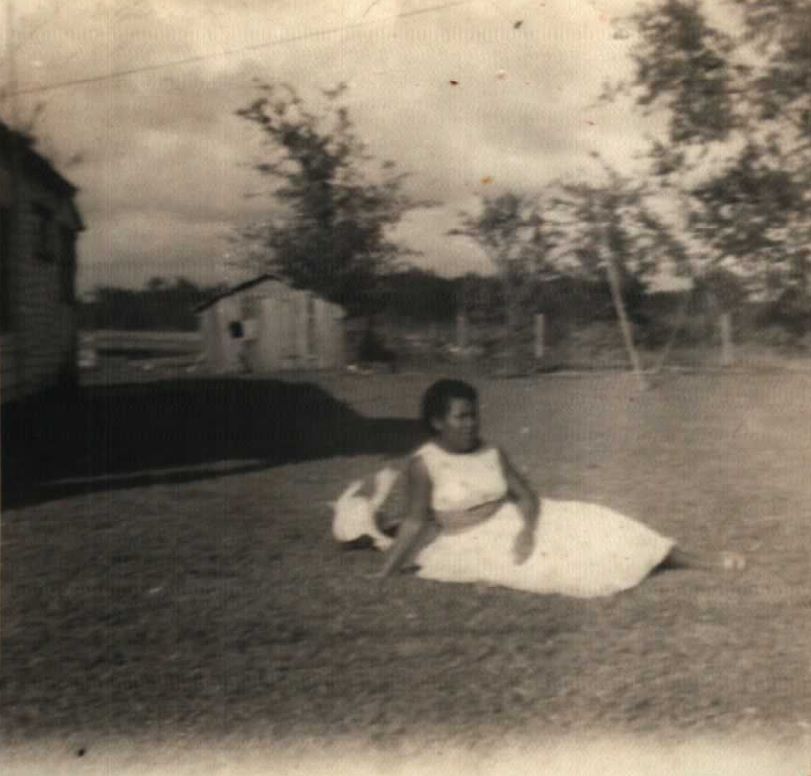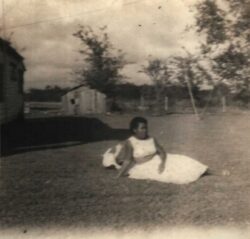Smithridge
Smithridge, a historically Black community founded after the Civil War by formerly enslaved people, has long served as a communal and economic hub for African Americans in southeast Louisiana.

Photograph provided by Leaudrey Harris
Home of Junius Harris, Smithridge, Louisiana.
Smithridge is a historically Black community founded after the Civil War in Terrebonne Parish by formerly enslaved people that for generations has served as a communal and economic hub for African Americans in southeast Louisiana. Through the height of Jim Crow, Smithridge residents owned and farmed their own land and established important community institutions including churches and the area’s only Black elementary school. Black businesses and a thriving cultural scene were part of its community draw. Since World War II, the community has faced issues with out-migration, economic downturn, government neglect, and the increasing threat of coastal erosion.
Founding through Reconstruction
Smithridge originated with two formerly enslaved men, Robert and Edward Smith, and their white enslaver father, Benjamin Franklin Smith, who worked as an overseer in the 1840s on the Terrebonne Parish plantation owned by Phoebe Pierce. There the elder Smith met Nellie Jones, an enslaved woman of African descent who had survived the domestic slave trade from Virginia to Louisiana. Smith and Jones had two children, Robert in 1849 and Edward in 1852. The power dynamics of their interactions—Smith as the free, white overseer and Jones as an enslaved woman of African descent—made it impossible for their relationship to be truly consensual.
In 1853 Smith began buying property for his own plantation on Bayou Little Caillou. He also began purchasing enslaved people, including Nellie and their two children. By the Civil War, the Smith Plantation encompassed over six hundred acres and was one of eighty sugarcane plantations in the parish. According to the 1860 US Federal Census Slave Schedule, there were twenty-eight people enslaved on the Smith Plantation.
The Civil War disrupted sugar cane production and ultimately led to the end of the slavery-based economic system. Although the Union Army occupied parts of Louisiana, Nellie, Robert, and Edward maintained their status as enslaved people as the Emancipation Proclamation did not extend to Union-held territories. In September 1864, Louisiana voters adopted the state’s new constitution, which abolished slavery, freeing Nellie, Robert, Edward, and the other enslaved people on the Smith Plantation. Robert and Edward remained on Smith Plantation working as tenant farmers.
Upon Benjamin Smith’s death in 1877, Robert and Edward purchased the land from his white widow. By 1881 they owned much of the original six hundred acres. Other formerly enslaved people, including John Brown, Victor Fitch, Daniel Harrison, Jim Harris, and Jack Nightshed, purchased plots of the plantation. Most African Americans in the area labored as sharecroppers or low-wage field workers on sugar plantations in the same gang-labor system employed under slavery and lived in the cabins once occupied by formerly enslaved people. Smithridge was an outlier as the Black residents owned the land they farmed.
Post-Reconstruction through World War II
In 1881 Robert named the community Smithridge. In 1883 a former Freedmen’s Bureau school relocated to Smithridge on land donated by Robert. Edward and others established the Mount Calvary Baptist Church and the Mount Calvary Baptist Benevolent Association, providing funeral costs and other benefits to community members. In 1903 Edward donated land for a new elementary school, the Calvary School, which served as the only school for most Black parish residents.
Many Smithridge residents farmed sugar cane on their own land, processing the sugar in nearby Montegut at the South Coast Company refinery, which operated for a period in the early twentieth century as the world’s largest sugar refinery. Smithridge residents also worked directly for the company as drivers, machine operators, and packers, among other positions. Others returned annually for work during the grinding season, and, as they had in enslaved communities prior to emancipation, residents celebrated the harvest during a week of feasting after New Year’s Eve.
Smithridge was also home to local businesses, including grocery stores, a funeral home, and Black physicians and dentists. Residents attended performances by musicians like Nolan Harris Jr. and the Smithridge School Band and cheered on the semi-professional baseball team the Wiz Kids.
Despite the opportunities in Smithridge, the community experienced dramatic change in the twentieth century. Many residents left Smithridge for New Orleans, Houston, Chicago, and other areas as part of the Great Migration. Robert and Ed died in 1923 and 1945 respectively. Tragedy struck the community in 1939. Bayou Petit Caillou ran through the town, and a pontoon bridge connected the east side—where 90 percent of residents lived—and the west side, where the church was located. A barge struck the bridge in August 1939 and the parish refused to replace it. Later that month, a boat carrying residents to a church service capsized, and six people drowned. The parish did not construct another bridge in Smithridge for three decades, forcing residents to travel several miles to the nearest bridge.
Post-World War II to the Present
After World War II, many residents lost ownership of their land due to exploitive lending by banks and private sources. The community suffered from inequality in allocation of resources, including education. African Americans had no educational opportunities beyond fifth grade until the state opened Southdown High School on the site of the former Naval Air Station in 1946. Even with a new building in 1952, the school was small and under-resourced. In 1954 the US Supreme Court declared the segregation of schools to be unconstitutional, however many Louisiana school districts, including those in Terrebonne delayed integration for years. In 1969, fourteen years after Brown v. Board of Education, the parish school district desegregated. Students transferred to the formerly all-white Terrebonne high school, and Southdown closed. However, Smithridge residents reported targeting by white administrators, leading to high rates of suspension and expulsion.
As the fight for Black civil rights continued, Smithridge residents successfully fought against discrimination in other areas, pressing the parish for a recreation center in the early 1960s and a new bridge in 1968. Even with these victories, Smithridge faced significant obstacles in the post-civil rights era. In 1972 South Coast closed and moved its sugar refinery to Guatemala. The local shrimp factory, which employed many Smithridge women, also closed in the 1970s. Some residents found work in the booming oil and gas industry. Even these individuals suffered through the 1980s oil bust. When the industry slowly recovered in the 1990s, many residents left for the shifting oil and gas work in west Louisiana and Texas.
Coastal erosion and the effects of flooding and hurricanes increasingly threaten Smithridge. Hurricanes have repeatedly impacted Terrebonne Parish. Yet, Smithridge had traditionally received little damage due to the elevation of the ridge and the wetlands and barrier islands. Much of the wetlands and barrier islands protecting Smithridge have eroded in recent decades. The parish government’s decision to pump water from communities north through Smithridge led to drainage problems and the overtopping of the bayou. In 1985 Hurricane Juan caused substantial flooding in Smithridge. In 2021 Hurricane Ida displaced many residents, and damaged and closed the school, churches, and the recreation center. Rather than repair the recreation center, the parish instead built a new recreation center outside of Smithridge.
The bridge, the only swing bridge in Terrebonne, remains an issue. The parish refuses to replace the bridge, even though engineers have deemed it structurally deficient. Residents have advocated for a new bridge, the reopening of the recreation center, the construction of sidewalks, and other needed improvements. There is still a strong group of elders in Smithridge, such as Sterling Sims, Henry Knightshed, Keith William, Nolan Harris, Jr., and LeAudry Harris, that share the history and their experiences.
This entry has been adapted from smithridgela.com with the permission of Kevin McQueeney and Shae Smith Cox. The authors would like to thank Smithridge residents for sharing stories and photos as they have worked with the community to document its history.
